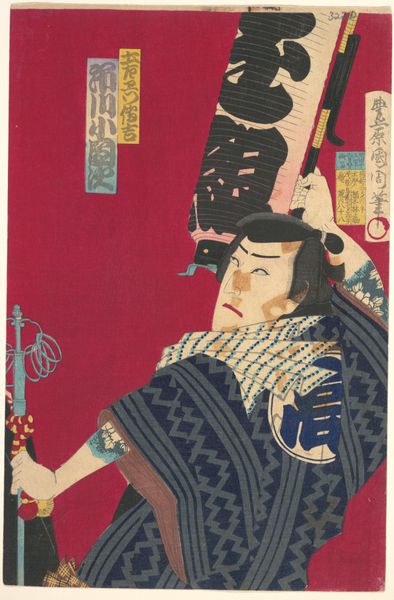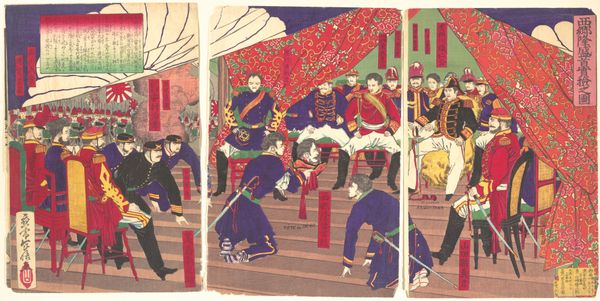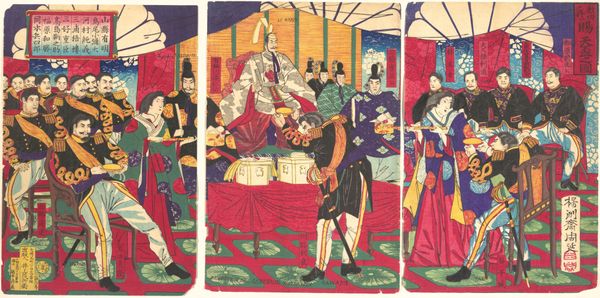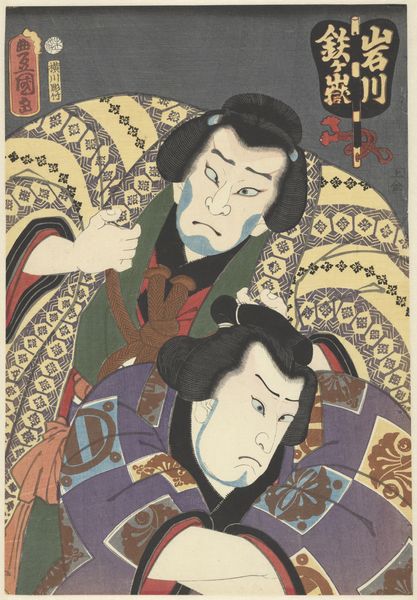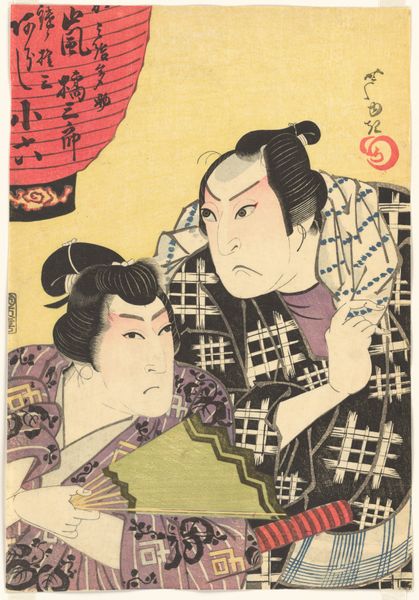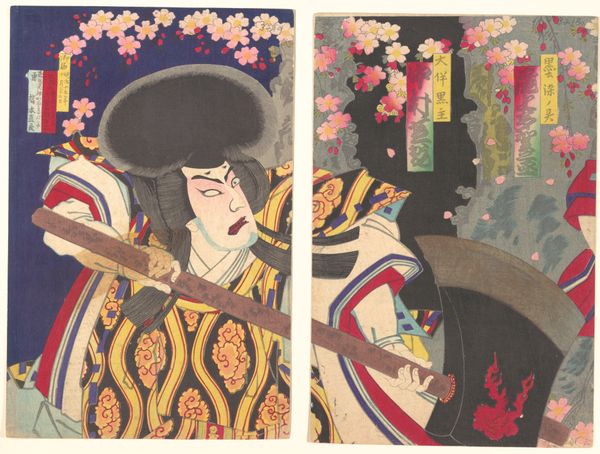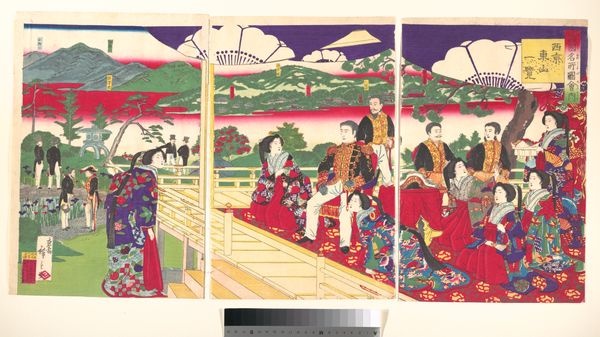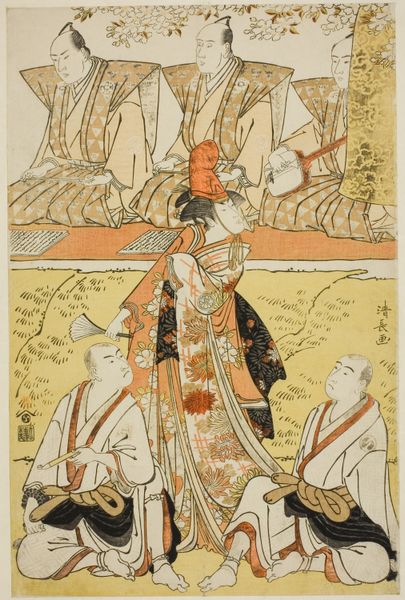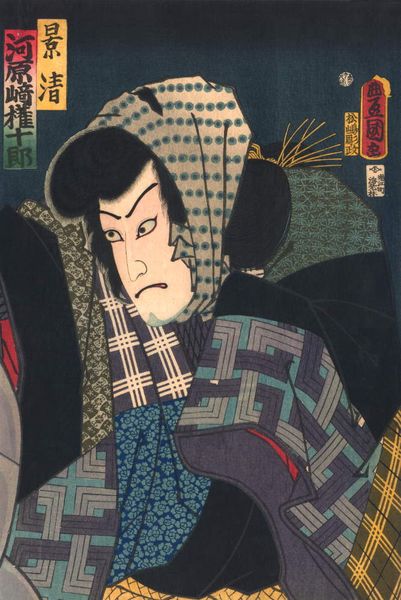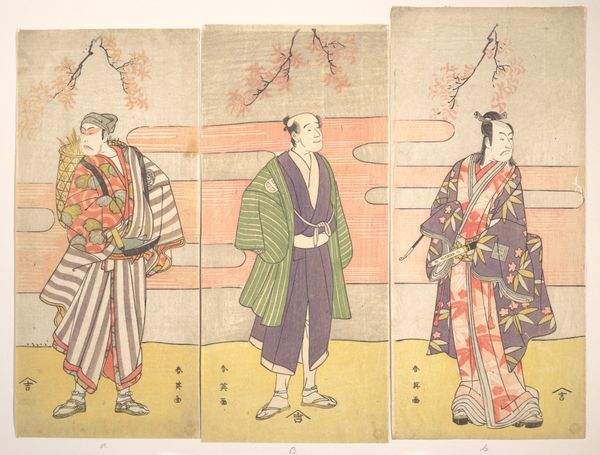
Ichikawa Kodanji as Seppu Shinsuke, Ichikawa Sadanji as Kishino Toshiaki, Ichikawa Danjūrō as Saijō Takamori, Onoe Kikugorō as Kurata Shinpachirō, Nakamura Chūtarō as Shōtarō, Onoe Kikunosuke as Magoichi, and Ichikawa Kōsaku as Tokumaru in the play Okige no kumo harau asa gochi 1878
0:00
0:00
Dimensions: Each panel: 14 1/4 x 9 3/4 in. (36.2 x 24.8 cm)
Copyright: Public Domain
Here is a woodblock print by Toyohara Kunichika, capturing a scene from the play "Okige no kumo harau asa gochi." Dominating the composition are the central figures, clad in meticulously detailed military attire of the Meiji era. These uniforms, adorned with gold embellishments and symbolic insignias, speak to a new, modern Japan, yet they are worn by actors embodying historical roles. Note the sword each character brandishes. Throughout history, the sword is not merely a weapon but a potent symbol of power, justice, and sacrifice. We find the sword in ancient Minoan iconography, where it was linked to sacrificial rituals. Fast forward to medieval Europe, the sword was a chivalric emblem of honor and divine authority. Observe how the presence of the sword in Kunichika's print evokes a deep, subconscious understanding of these intertwined notions. The visual language of the sword engages the viewer, tapping into our collective memory and highlighting the cyclical dance of history and symbol.
Comments
No comments
Be the first to comment and join the conversation on the ultimate creative platform.

